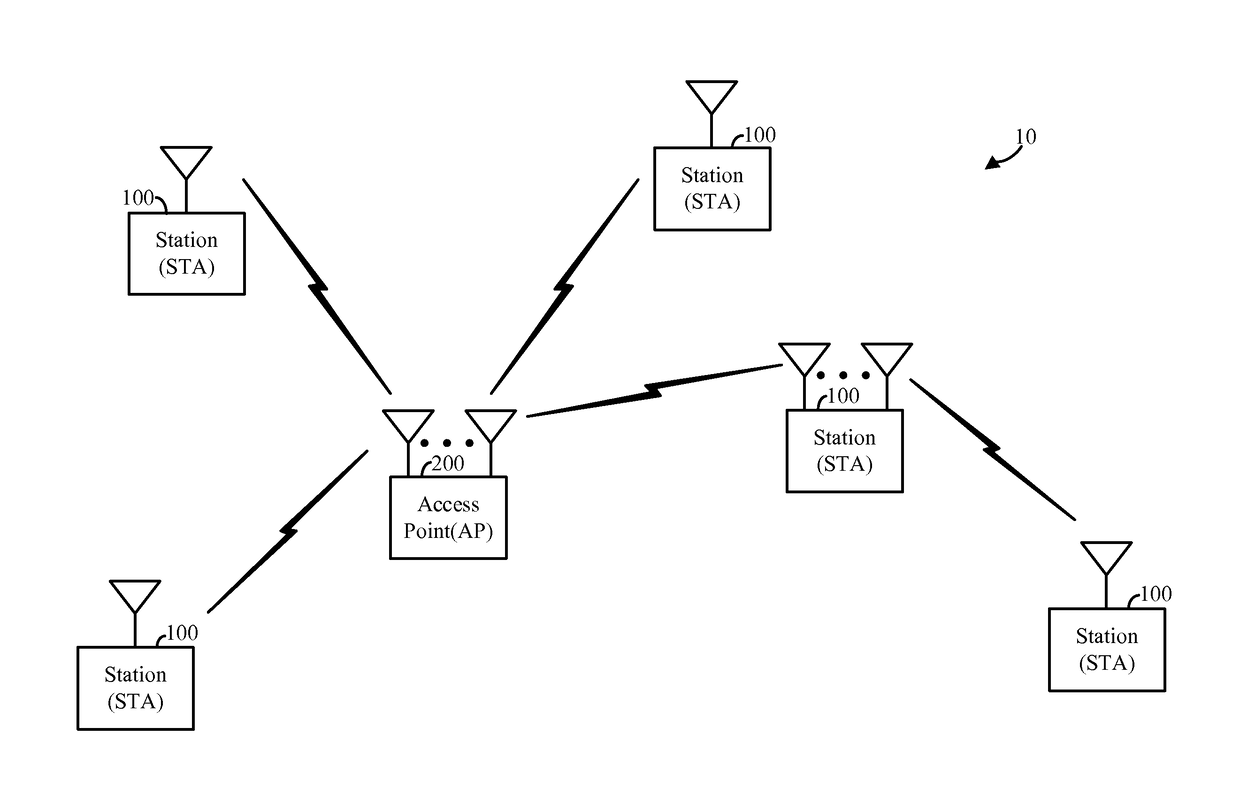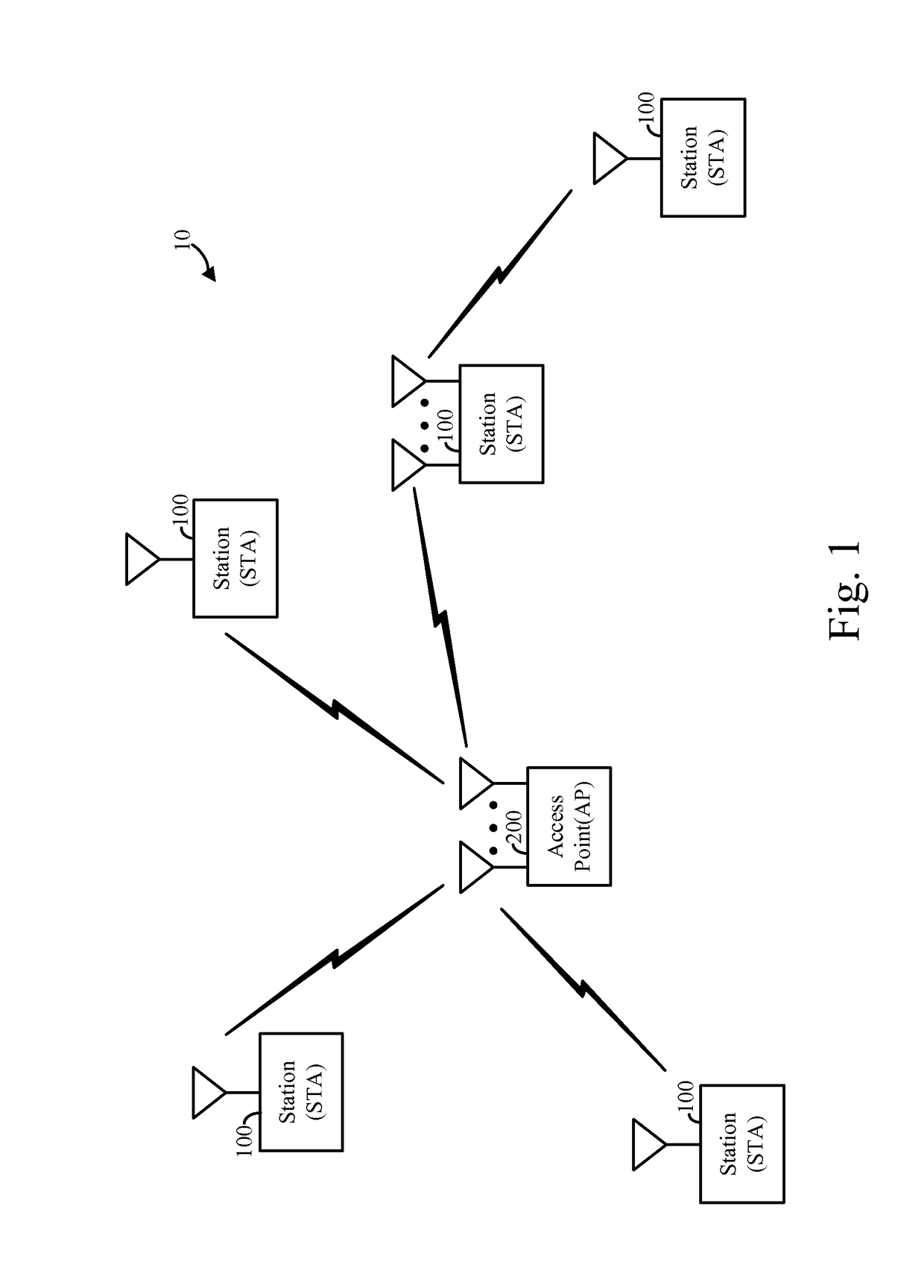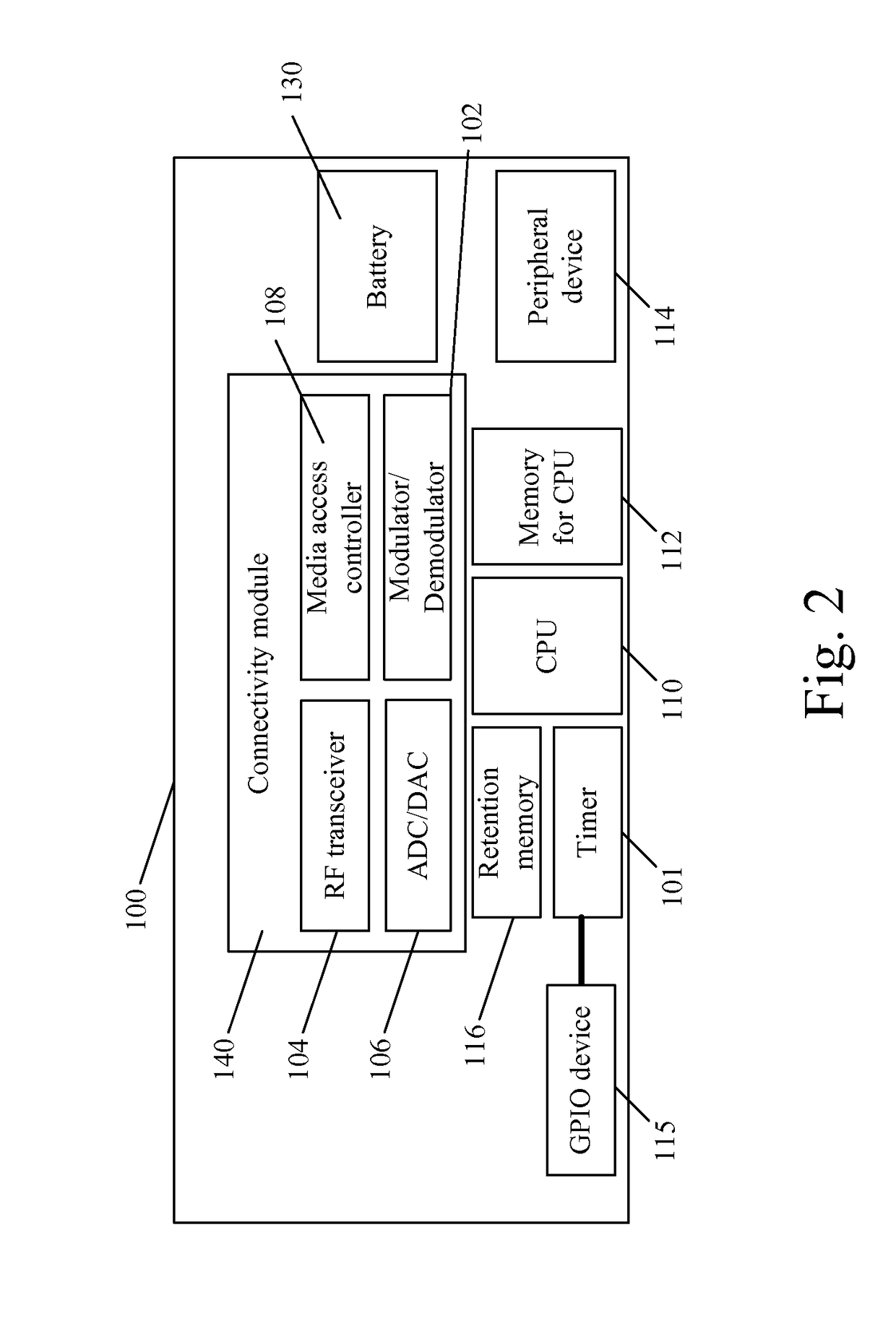Method of saving power of station in wireless network
a wireless network and power saving technology, applied in the field of communication, can solve the problems of limited efficiency of the method for stations desiring very low power consumption, and achieve the effect of prolonging the battery life and saving power
- Summary
- Abstract
- Description
- Claims
- Application Information
AI Technical Summary
Benefits of technology
Problems solved by technology
Method used
Image
Examples
first embodiment
[0035]Please refer to FIG. 3 in conjunction to FIG. 2. FIG. 3 is a flowchart of a method of saving power of a station in a wireless network according to the present invention. The method comprises:
[0036]Step 300: Upon receiving a wake-up signal, power on the connectivity module 140, the timer 101, the retention memory 116, the central processing unit 110, and the peripheral devices 114.
[0037]Step 302: Perform the connectivity module 140, the timer 101, the retention memory 116, the central processing unit 110, and the peripheral devices 114 in a connection state and / or in an authenticated state.
[0038]Step 304: Check whether data from the access point 200 is transferred to the station 100.
[0039]Step 306: Receive the data along with the beacon frames until the station 100 transmits and receives all needed data.
[0040]Step 308: Upon a condition that there is no data to be transferred to the station or after the station transmits and receives all needed data, perform a sleep mode to powe...
second embodiment
[0046]Please refer to FIG. 6 in conjunction to FIG. 2. FIG. 6 is a flowchart of a method of saving power of a station in a wireless network according to the present invention. The method comprises:
[0047]Step 600: Upon receiving a wake-up signal, power on the connectivity module 140, the retention memory 116, the central processing unit 110, and the peripheral devices 114.
[0048]Step 602: Perform the connectivity module 140, the retention memory 116, the central processing unit 110, and the peripheral devices 114 in a connection state and / or in an authenticated state.
[0049]Step 604: Check whether data from the access point 200 is transferred to the station 100.
[0050]Step 606: Receive the data within beacon frame.
[0051]Step 608: Upon a condition that there is no data to be transferred to the station or after the station transmits and receives all needed data, perform a sleep mode to power off the connectivity module 140, the retention memory 116, the central processing unit 110, and th...
third embodiment
[0056]Please refer to FIG. 7 in conjunction to FIG. 2. FIG. 7 is a flowchart of a method of saving power of a station in a wireless network according to the present invention. The method comprises:
[0057]Step 700: Upon receiving a wake-up signal, power on the connectivity module 140, the central processing unit 110, and the peripheral devices 114.
[0058]Step 702: Perform the connectivity module 140, the central processing unit 110, and the peripheral devices 114 in a connection state and / or in an authenticated state.
[0059]Step 704: Check whether data from the access point 200 is transferred to the station 100.
[0060]Step 706: Receive the data within beacon frame.
[0061]Step 708: Upon a condition that there is no data to be transferred to the station or after the station transmits and receives all needed data, perform a sleep mode to power off the connectivity module 140, the central processing unit 110, and the peripheral devices 114.
[0062]In step 700, the GPIO device 115 generates a wa...
PUM
 Login to View More
Login to View More Abstract
Description
Claims
Application Information
 Login to View More
Login to View More - R&D
- Intellectual Property
- Life Sciences
- Materials
- Tech Scout
- Unparalleled Data Quality
- Higher Quality Content
- 60% Fewer Hallucinations
Browse by: Latest US Patents, China's latest patents, Technical Efficacy Thesaurus, Application Domain, Technology Topic, Popular Technical Reports.
© 2025 PatSnap. All rights reserved.Legal|Privacy policy|Modern Slavery Act Transparency Statement|Sitemap|About US| Contact US: help@patsnap.com



